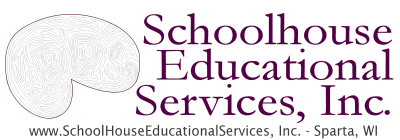Guidelines for the Administration of Standardized Tests via Telepractice
Date Published: April 11, 2020
With the restricted face-to-face access to clients and students during the long-term closure of offices and schools during the COVID 19 pandemic, practitioners have requested guidance on administration of standardized tests via telepractice. These telepractice guidelines from Schoolhouse Educational Services, Inc. apply only to the administration of Schoolhouse Educational Services, Inc. proprietary, printed assessment products, such as the TVCF and the KDI-2 NU.
When the guidelines below are adhered to, Schoolhouse Educational Services, Inc. will allow the telepractice administration of its standardized tests.
- It is the examiner’s decision as to whether to use telepractice for test administration. In making this decision, it is recommended that the examiner consider the guidelines in the Standards for Educational and Psychological Testing. Practitioners should also consult their respective professional organizations for further guidance on using assessments via telepractice, as well as local, state, and federal regulations.
- The printed test batteries were not intended or standardized for telepractice administration. No matter how carefully test administration rules are followed during telepractice, some alteration to the standardized procedures will occur. There are no studies on how such alterations affect the validity and interpretation of the test results.
- Telepractice means that the examiner is in one geographical location and the examinee is in a different location. The examiner and examinee should communicate via a secure internet connection. During the administration the examiner and examinee should be able to see and hear one another. There should be good audio quality for both the examiner and examinee. The examinee should be able to clearly see all test stimuli. The examiner should be able to see what the examinee is pointing to if a such a response is required, and the examiner should be able to see what the examinee is entering in any response booklets.
- Subtests that require the use of manipulatives, such as blocks, by the examinee should not be administered.
- Whenever telepractice is used for administration, the details of any modifications made during testing should be reported along with the test results. These details should also include a description of the assistance provided by the facilitator at the examinee’s location and observations of the examinee’s behavior during testing.
- This permission is not intended to allow photocopying, scanning, or duplication of test protocols, including any screen capture or session recording technology. Response booklets and other printed materials needed at the examinee’s location should be mailed to the examinee in advance of the testing session.
- Before test administration, the examiner must obtain a signed agreement from the client or the child’s parent, and any onsite facilitator, that the testing session will not be recorded, reproduced, published, or posted on the internet. The agreement should also stipulate that the printed materials will not be copied.
- When there is a facilitator with the examinee, which may be a parent when children are tested, the facilitator should be trained in advance of the testing session. The primary purpose of the training is to prevent the facilitator from violating standardized administration practices. For example, it should be clear to the facilitator that no cues or feedback are allowed. The onsite facilitator’s role should primarily be the management of the computers and audiovisual equipment. The facilitator may also help manage examinee response booklets. In such instances, the facilitator should be directed not to open any envelopes containing response booklets or other test materials until directed to do so in view of the examiner. Upon completion of examinee response booklets and in view of the examiner, the facilitator should seal the booklets in prepaid return envelopes.
